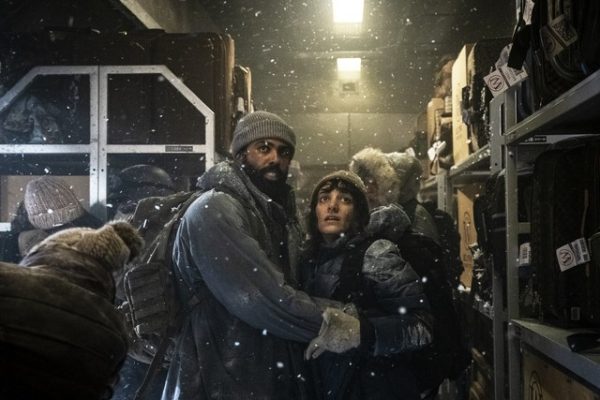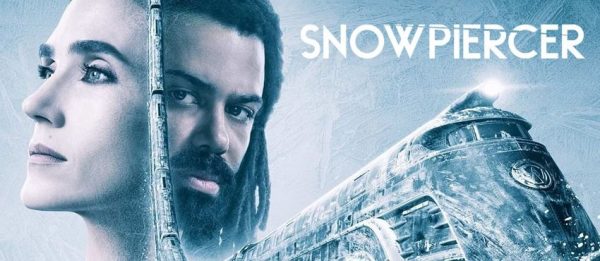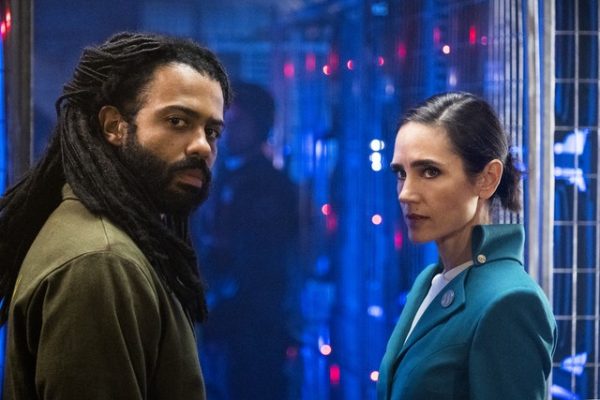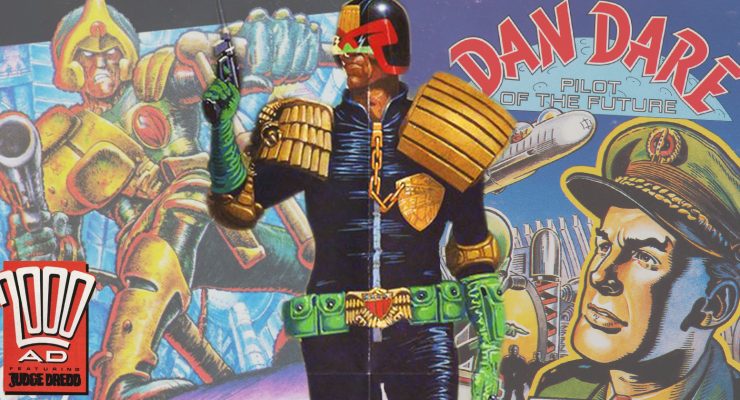Martin Carr recently talked to production designer Barry Robison about bringing the long anticipated adaptation of Snowpiercer to our screens. A production which has historically made headlines, is burdened by a feature film forerunner of iconic status, and has yet emerged unscathed…
Considering the protracted history behind Snowpiercer how did you first get involved?
Through my agents I got a call one afternoon and they said they had this show in Vancouver for TNT and they needed a designer immediately. I asked what it was and they said Snowpiercer and I was like surely you’re kidding, because I loved the movie and had seen it a number of times. It was a television show and I am mostly a feature film designer. So I was a little hesitant and I asked if I could have twenty four hours to think about it, so they gave me overnight and I called the next day and had a great Skype meeting. Then flew up to Vancouver forty eight hours later. I knew I was going to have to go in pretty strong and be assertive, because there was very little time left in prep for me to take over. So I went in strong and never looked back.
How did you approach the project bearing in mind that limited time frame?
The directive from TNT, Graeme (Manson) and James (Hawes) was really clear. They did not want a carbon copy of the feature film. So I went back to the graphic novels and one thing I will say is that they are visually so strong. There is a definite point of view and I made that my jumping off point for the design. I felt the design not unlike those graphic novels needed to be robust and I tend to be a theatrical designer anyway, so it seemed to fit the bill. So I started rendering, bringing in my illustrators and really started selling the look of this show.
Were there any specific influences you plucked directly from the graphic novels that you’ve infused into Snowpiercer?
One was the exterior of this train. The first thing I had to wrap my head around was a train which is ten miles long, with over one thousand cars, broken up into socio-economic classes. From the graphic novel I noticed how the visual exterior was simple and basic but very strong. Also texture because although the novels are black and white they are so full of texture that I could really let my imagination run wild with that. Which is when I started bringing that into the look for these train cars from the tail which is overcrowded, dark and somewhat sinister then changing materials as you go up the socio-economic ladder. Working on the train I laid out a plan (then split that into) sections so I could adjust (if needs be) from the tail through to first class.

Did you have any conversations around the visual representations of class division on screen with the producers and TNT?
I’ve got to be honest with you Graeme (Manson), James (Hawes) and everyone else were wonderful partners. All I can really say is that it was open communication at all times. It is a television show and there are numerous meetings one or two of which we had with the studio in those early stages. Purely because this was a big project and an important one to them and I wanted to keep them happy. So we would have these meetings (in which) no idea was too much and everyone could bring something to the table. Obviously I would filter any positive notes into the design and then represent, but luckily I had great partners who were really super supportive.
As the train represents such a broad cross section of cultural differences, how did you go about making that clear on screen?
Again we didn’t want a carbon copy so the scripts were our first jumping off point for this television series, which meant we could go much deeper into each class. I remember one comment from TNT was that by the time we get to first class they didn’t want anything which reeks of sci-fi and I was in total agreement. This felt like a much more analogue kind of show even though there was technology in it. They specifically didn’t want me to use chrome which I was thrilled by (so) I suggested copper, because it can change and morph depending upon the application. But getting back specifically to your question, this was one of the areas I was able to influence design by simplifying details and roughening up the textures. The tail is all steel and somewhat of a prison like environment (which changes) to wood and colour in second then third, (before) finally our first class which is a visual representation of heaven. One other thing to remember about Snowpiercer and the class system (is that) even though it’s a train (there are nautical comparisons). Where you have your working class down in the lower bowels of the ship with no windows, third class small portholes maybe, then finally you get first class with huge windows and lofty airy spaces.
Is there anything you drew directly from the script itself which influenced the visual palette of Snowpiercer?
To be honest with you I had a very clear idea of what it should be and in my first week or so I was working at warp speed, remembering I had to put a colour palette and colour board together. Purely because I didn’t want to begin designing then go off the rails by making a misjudgement in the colour palette. Once I grab the script I dream about the colour and how characters are going to interact and what their look and state of mind might be. Digressing briefly I did it on Hacksaw Ridge and was specifically able to id a character’s emotions and then back that up in a colour palette. So I tried to do the same thing in Snowpiercer which was tougher because it is a series and a set has to play over numerous episodes and things happen. However if a character had their own environment it would (me to) be very specific.
SEE ALSO: Exclusive Interview – Senior VFX Supervisor Jon Cowley on Snowpiercer
What conversations did you have around visually depicting the ecosystem within Snowpiercer?
That goes back to all the meetings that we had in regards to being able to visually attribute a script, while also sometimes just working off notes or beat sheets of things that were coming. We were always able to expand and contract where we needed to. One example in The Bible there was a set piece called The Chains and no one had a clear idea of what this space wanted to be. It wasn’t in the movie and hadn’t been seen before and it’s a sort of artistic communal space. So I went to James (Hawes) and he said ‘maybe in a car there are multiple levels where people hide and it can be dark but open and artistic’. So then I went to Graeme (Manson) who basically said ‘it’s really good, it’s gotta be cool’. So I went away for the weekend and thought about it before going back to my drawing of the exterior train. In this drawing there are a number of cars that are used for border control and then I thought you had to have food stuffs on this train and if they have been out there for a while food stuffs are not being replenished. (What if) these cars are empty then The Chains could be an empty container car that these artists turned into their own space.
It was a hard sell let me tell you but I got through the initial, everybody loved it and this comes back to how design can affect different parts of the show. So I got it done, I made a model and got my carpenters to build me a full scale section, showed that to TNT and they went wild. Plus all the directors loved going to that space and this is the great thing about doing a television show, because you can really affect the show in so many different ways.
Have you got projects coming up which you are excited about, but you can also talk about?
There is a reason I didn’t do the second season of Snowpiercer because I got a call from Amazon to do The Dark Tower. Well let me tell you we did The Dark Tower and I loved it. We were in Croatia for nine or ten months and they didn’t pick it up. All my work was really cool and I had such great stuff as I did with Snowpiercer. So when that started the second season I was in Croatia doing The Dark Tower, got back in October and now we have to stay indoors, but you know reinterpreting these shows for television is fascinating.
Thank you for taking the time to talk about Snowpiercer Barry and take care.
SEE ALSO: Read our review of Snowpiercer’s premiere episode here
Martin Carr













